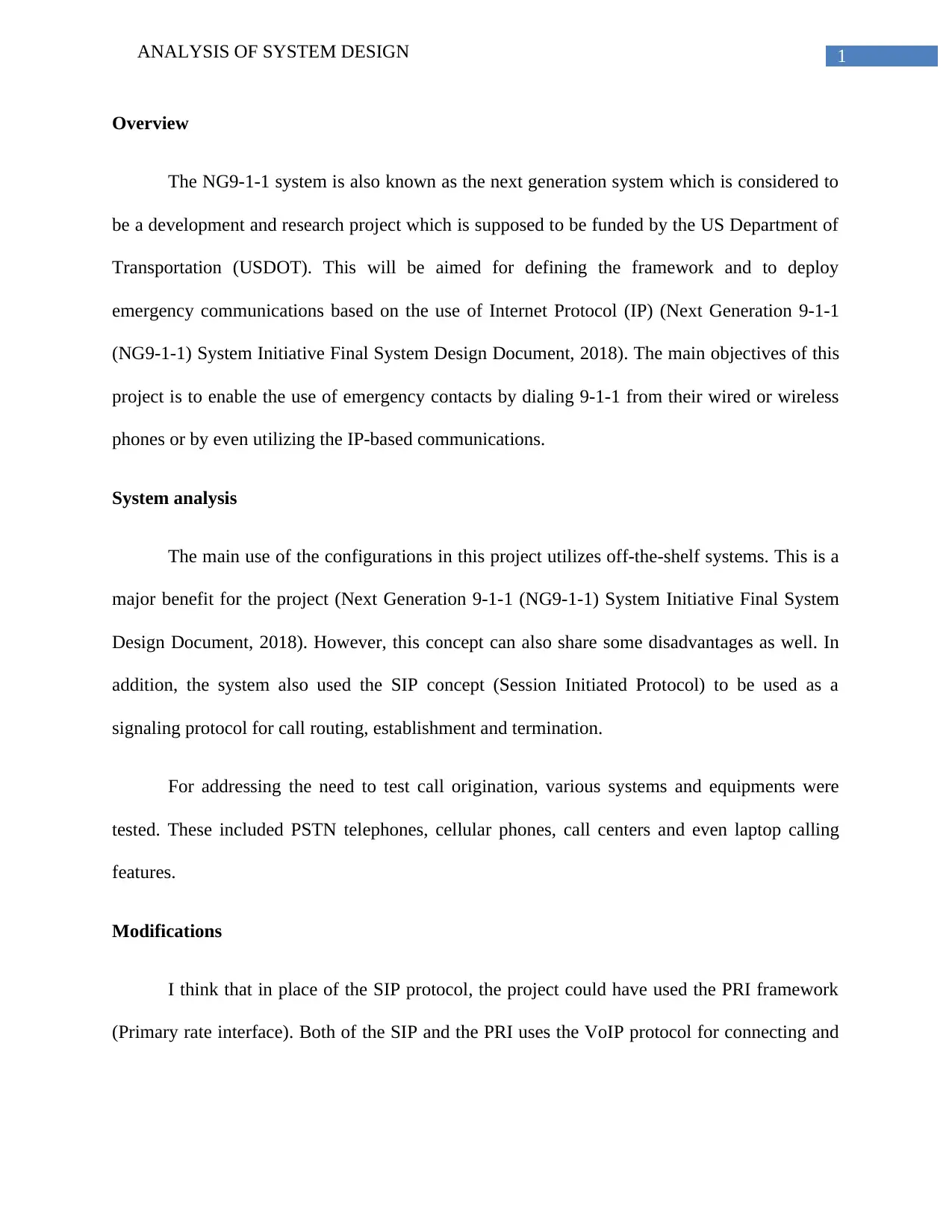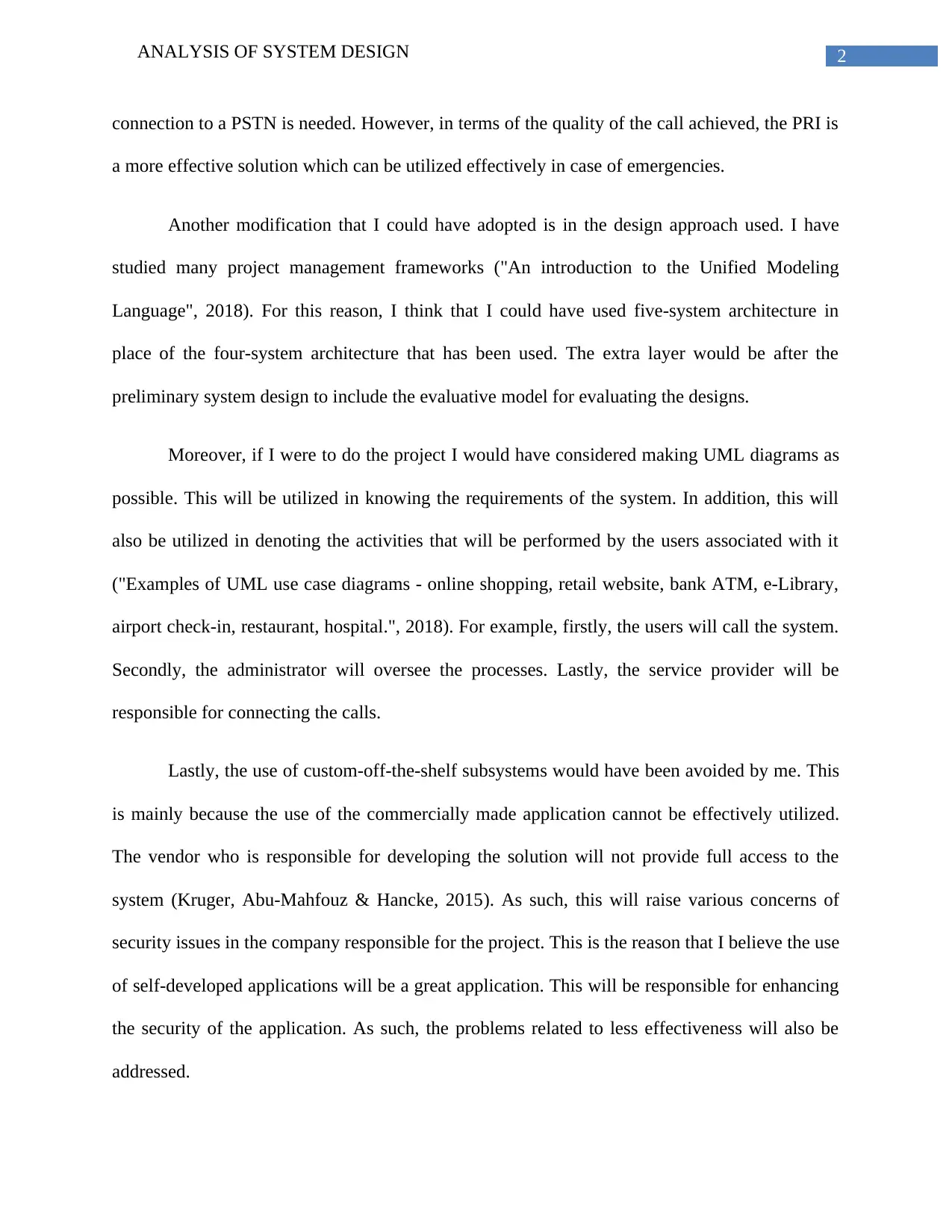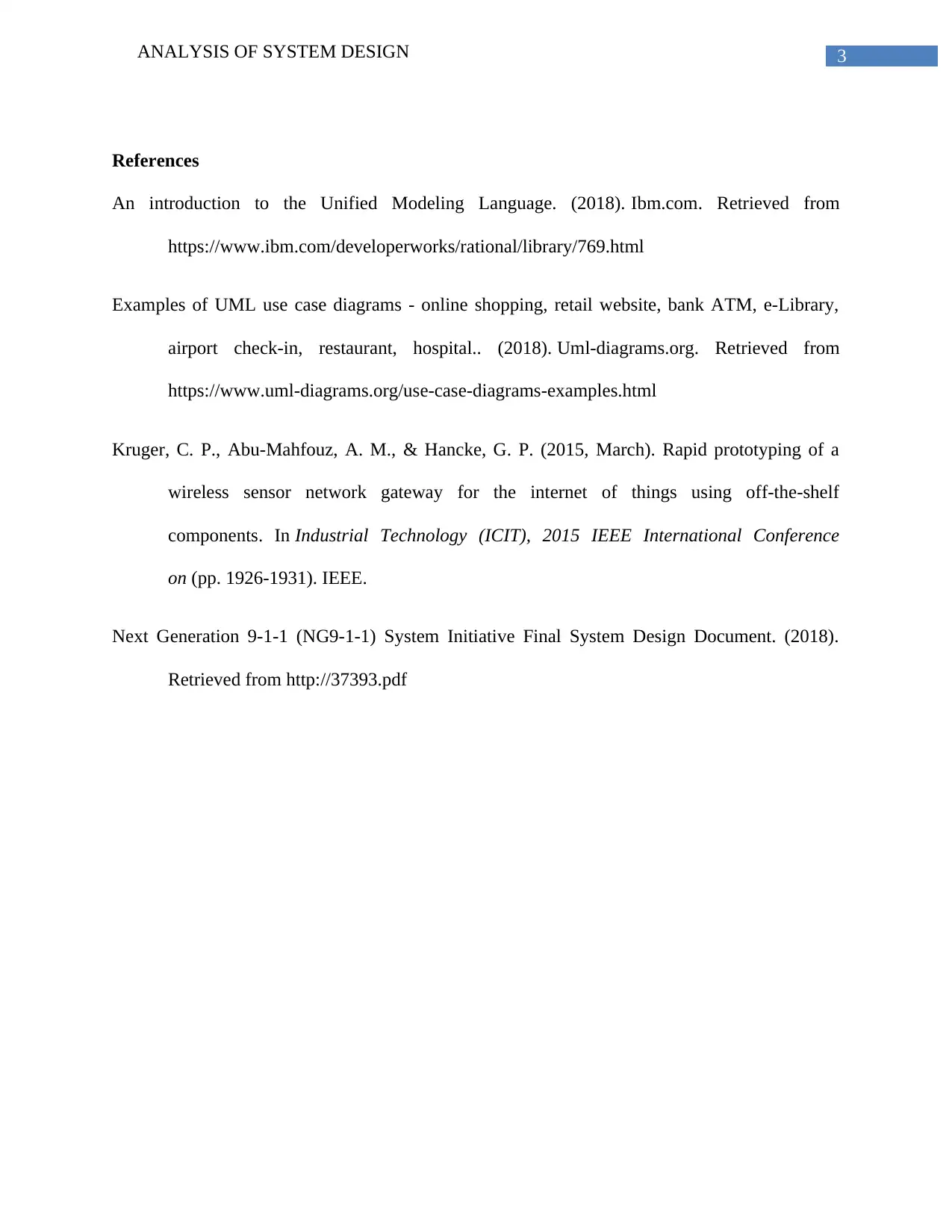University System Design Analysis: NG9-1-1 Project and Modifications
VerifiedAdded on 2020/05/16
|4
|778
|130
Report
AI Summary
This report provides an analysis of the NG9-1-1 system design, a project funded by the US Department of Transportation to develop an IP-based emergency communication system. The analysis focuses on the system's architecture, which utilizes off-the-shelf components and the SIP protocol for call routing. The report identifies potential modifications, such as using the PRI framework instead of SIP for improved call quality, implementing a five-system architecture with an evaluative model, and incorporating UML diagrams for system requirement analysis. The author also suggests avoiding custom-off-the-shelf subsystems due to security concerns and limited access, advocating for self-developed applications to enhance security and effectiveness. The report concludes with references to relevant sources, providing a comprehensive overview of the system and its proposed enhancements.
1 out of 4









![[object Object]](/_next/static/media/star-bottom.7253800d.svg)